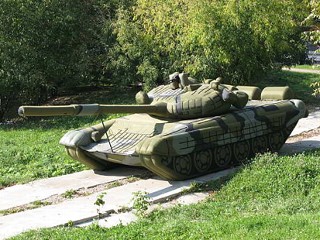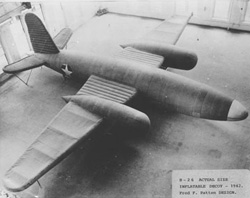"How real was it?" I asked him one evening over dinner, referring to the Soviet threat which we basically had spent every waking moment thinking about. In precise English, he told me, "None of it. We were more scared than you." The seven Spetznaz divisions had low morale and the TO&E(Table of Organization and Equipment ) we would get from spies was fabricated - if they had 10 tanks, for example, they might have only one necessary part to make them run so they would place it in various tanks, move them, and make it appear as if they were active units.
And then there were inflatables. Camouflaged fakes designed to look like they were real. our talk was in 1997. Sometimes what is old is new again.
A company called Rusbal is hoping to work with Russia's Defense Ministry to create a line of inflatable weapons - fakes - that visually, with heat signatures, and on radar appear to be real. Rusbal presumably stands for Russian Balloons but I can't say that for sure. To pull it off, a tank might have a thin metal lining for radar and a heater inside for thermal so a $12,000 fake could look real enough to lure a $1 million missile.

Inflatable decoy. Courtesy: Rusbal
Inflatables are nothing new, of course. One head fake for the invasion of Normandy in World War 2 was Gen. George S. Patton in command of an inflatable army on the coast of Dover, which made the Germans think the invasion would come at Calais rather than 150 miles west, where it did. That decoy army was part of the reason for D-Day success, along with the Germans misunderstanding of American politics. It was unthinkable that America's 'best' general was not being used for the important invasion due to unpopularity at home (1) and so their willingness to accept fakes was heightened.

A full-size inflatable B-26 from World War 2. Credit: Patten Company.
Rusbal isn't some new player in an amped-up Russian military effort. The bulk of their business comes from 'bounce houses' like our kids play in and traditional hot air balloons.
NOTE:
(1) No one is in the doghouse forever and in August, 1944 he was allowed to go to Europe where he astonished friend and foe alike with his march across France. That December, during the Ardennes German counteroffensive (Battle of the Bulge) Patton rushed his troops to the area and achieved what former subordinate and then superior Omar Bradley called "one of the most astonishing feats of generalship of our campaign in the west".





Comments